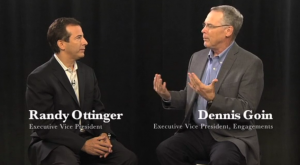
The Alignment Factor. Creating a Great Guest Culture
Editors Note: During our August focus on Guest Experiences, we are honored to have some of the best voices in the world of Customer Experience provide guest posts for the Vision Room. As you read the content below, simply think “Guest” where you see the word “customer” – and you will benefit from the knowledge and expertise of some great minds.
One of the most important ways to improve customer service is to make sure that everyone in an organization is in alignment with the customer service and/or experience vision. While the concept is just one word, there are several steps to achieving alignment.
The first step is to define that vision in simple and memorable terms. So, if you’ve been following my work, go back a few weeks to the concept of creating your customer service mantra, which is my fancy word to describe a customer service vision statement. Before you can get everyone into alignment, you must give them something to align with. I like a vision statement or mantra that is short and to the point. So, if you don’t already have a vision for everyone to align to, you’re going to need one.
Assuming you have the customer service vision statement – or mantra, as I like to call it – the next step is to prove how everyone in the organization impacts that vision. And, I mean everyone! Start with your basic customer journey map that shows all of the typical interactions – or touchpoints – that the customer has when doing business with you. And you may need more than one map. A customer’s sales journey is different than a service or support journey. The interactions a customer has on your company’s website will be different than over the phone or in person.
There is a second part of the journey map exercise, to show underneath each touchpoint how different departments and roles within those departments impact those touchpoints. If done correctly, you will eventually be able to show how each and every department – in other words, everyone – impacts the customer’s experience.
I know I’m sounding redundant, but if you haven’t already done the crucial steps of creating a vision and journey map – and I’m surprised at the number of organizations who haven’t yet done so – you have extra work to do before you can think about getting your employees into alignment.
And, now it’s time to get everyone into alignment. By getting everyone to know and understand your customer service vision, and showing on a journey map how everyone, even as individuals, impact the customer’s experience, you can begin to train everyone to your vision. This is simple in concept, but not always easy to do. You must have an effective communication strategy. It can start with an announcement. It must be articulated as not just a vision, but also an expectation that everyone must keep in mind, regardless of their role and responsibility in the organization.
And just announcing and communicating it is not enough. Each and every employee must be properly trained. It must constantly be reinforced. It must be obvious and almost overt. For employees to be in alignment, they must know it, understand it, and be able to execute it.
Customer service isn’t just for the customer service department or the front line. It’s everyone’s job. So, if there is one thing that will make a difference in your customer service, it is to get everyone in the organization in alignment with your customer service mantra.
Shep Hyken is a customer service expert, keynote speaker and New York Times bestselling business author. For information contact or www.hyken.com. For information on The Customer Focus™ customer service training programs go to www.thecustomerfocus.com. Follow on Twitter: @Hyken
Want to learn how to create an EXCEPTIONAL Guest Experience at your church? Check out Auxano’s Guest Experience Boot Camp, coming to Orlando, FL on April 3-4.


Tags: Alignment, Church Guest Experience, Guest Experience, Shep Hyken






























